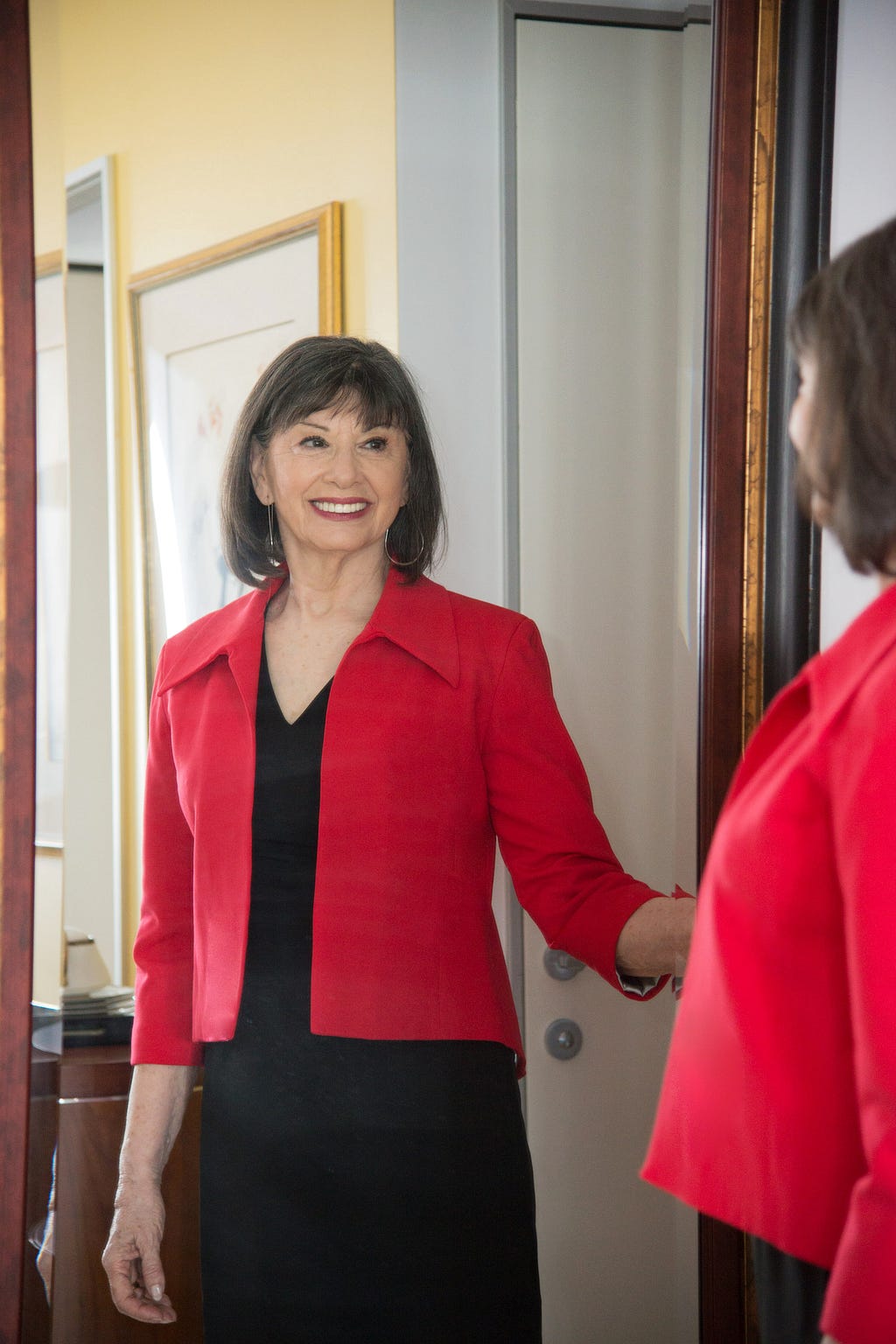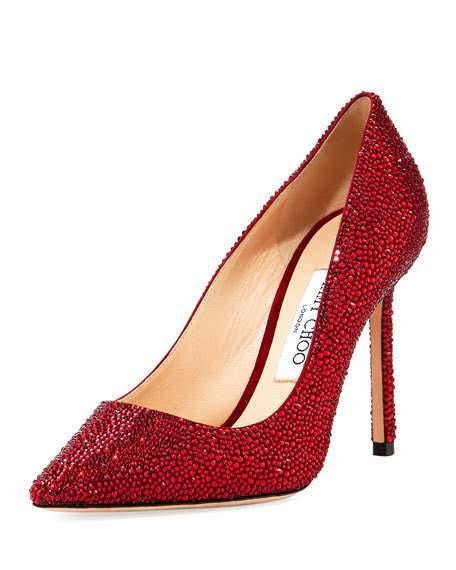What to Wear to Work: Serena’s Tutu, Kyrsten’s Shoes, and Why I Wear Red


Issue 64 — September 2, 2018
After the third interview request in a week’s time asking me to comment on what constitutes appropriate work attire for women, I finally realized the cosmic importance of the question.
The wry humor in tennis great Serena Williams’ frilly tutu following on the heels of the flap about her stern black catsuit finally awakened me to the rampant sexism of the constant attention on women’s self-presentation, from clothes to hairstyles to makeup to the iconic use of the red stiletto to signify “woman” on many book covers and magazine articles.
#BIGPICTURE: Serena Williams slays the tennis court in a tutu
I often rue the many thousands of hours I have spent in my life blow drying my hair and putting on makeup. And yet I know it has paid off in my own career success. Lucky for me I am brunette and apparently “pretty but not too pretty” as this study found was correlated with success for women.
This past week, I had a conversation with two lawyers about the double standard often applied to men and women in the courtroom. One commented, at many firms, “Emphasis is on appearance for women and not for men. I feel a lot of things women hear about are how you present yourself outwardly,” she says. Women lawyers are asked, “Did you wear pantyhose to court? Did you wear a skirt suit or a pantsuit?”
Earlier this year, Congresswoman Nancy Pelosi gave the longest speech in the history of the House of Representatives — over eight hours — and the news reports spent more time talking about her Jimmy Choos than her speech topic.
And don’t get me started on Hillary Clinton and her pantsuits, hairdo changes, and sound of her voice.
Should I call it out or reframe?
While pondering how I should answer this question the next time I’m asked — whether to call out the inherent misogyny first or lead by framing the issue as one that applies to and warrants the same answer across genders — a friend called my attention to one example of how women’s attire is judged harshly even in the most irrelevant situations.
In Arizona, two female members of Congress are battling to win the U. S. Senate seat being vacated by Republican Jeff Flake. On the Democratic side, Kyrsten Sinema, who has a compelling American dream personal story of raising herself out of poverty and getting both law and social work degrees before running for office. And on the Republican side, Martha McSally, whose military experience as a fighter pilot, the first American woman to fly a combat mission, is her defining story.
Both women have successfully completed Ironman World Championship triathlons. So neither is a slacker in the toughness department. Both positioned themselves as moderates until the primary results pitted the two against each other in the November general election, at which point McSally quickly took a hard right turn.
It should be cause for celebration that one way or the other, the state will have its first female U.S. Senator.
But who would have imagined that shoes could become a key differentiator in the race.

Is a candidate who has more shoes less qualified to be in the Senate?
McSally’s first attack ad after winning her primary alleged Sinema has 100 pairs of shoes whereas she, McSally, has flown combat missions. No evidence is given for the number of shoes Sinema has, nor is there an accounting for McSally’s closet. But that’s not really the point. The important thing is the misogyny inherent in the focus on shoes as symbols of character.
The phenomenon is at its worst when one woman does it to another. And in this case, it’s from a woman who told CQ Roll Call, “I consider myself a feminist Republican, and that’s not an oxymoron.”
I daresay that in the era of #metoo, if a male candidate had used the issue of shoes to disqualify a female opponent he would have been drilled by the media if not the other candidate. In this case? Crickets.
Tell me if you can, what earthly difference does it make if a lawyer wears pantyhose, a candidate has a penchant for collecting shoes, or as in the case of Utah’s Republican senator John Curtis, has a collection of 300 pairs of socks? Does that disqualify him? He told CQ he finds his socks are a fashion statement that make him more approachable to constituents.
So here’s how I answer the question.
In the end, I decided the better part of valor was to answer the question straightforwardly without respect to gender.
The truth is that we all, male and female, want to find a balance between personal style, comfort, and dressing appropriately to the situation. After all, McSally’s combat boots would look pretty silly on the Senate floor, though they might be more comfortable than Pelosi’s stilettos. Or maybe not — I’ve had heavy boots that almost killed me after a day of hiking.

In general, consider the culture of your workplace and dress accordingly. Do not show body parts that you would not want to see of other people. Present yourself in a way that people will think more about the quality of your work than what you are wearing. Dress for the job you want, or at least a little better than is expected of the job you have. Be neat and clean. if you are unkempt and appear not to take good care of yourself, people are likely to think you will not take good care of your work. Have a little fun with your attire in a way that brands you. For example, I wear red when I’m speaking or training because it’s my favorite color, it makes me happy, and it’s the color of my book’s cover (I have a thing about wearing the color of my latest book’s cover — don’t ask.)
And I just loved Serena’s tutu.
What are your thoughts on the matter? Share them with me please.
GLORIA FELDTis the New York Times bestselling author of several books including No Excuses: 9 Ways Women Can Change How We Think About Power, a sought-after speaker and frequent contributor to major news outlets, and the Co-Founder and President of Take The Lead. People has called her “the voice of experience,” and among the many honors she has been given, Vanity Fair called her one of America’s “Top 200 Women Legends, Leaders, and Trailblazers,” and Glamour chose her as a “Woman of the Year.” As co-founder and president of Take The Lead, a leading women’s leadership nonprofit, her mission is to achieve gender parity by 2025 through innovative training programs, workshops, a groundbreaking 50 Women Can Change The World immersive, online courses, a free weekly newsletter, and events including a monthly Virtual Happy Hour program and a Take The Lead Day symposium that reached over 400,000 women globally in 2017.
